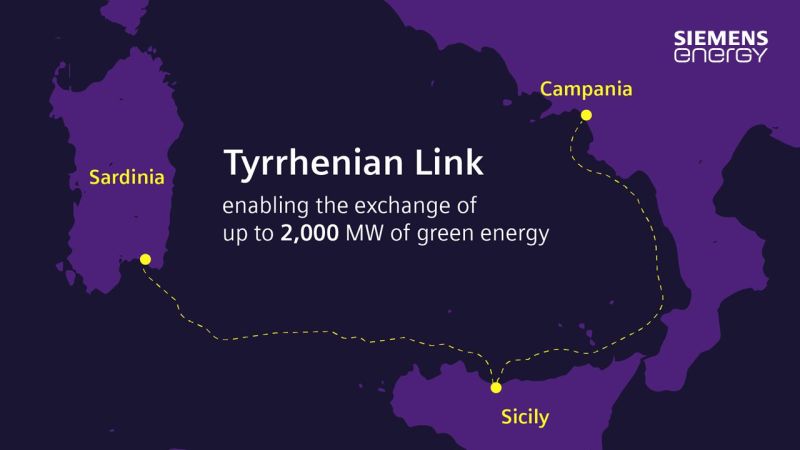General – Converter Stations
Italian transmission system operator Terna has awarded the consortium of Siemens Energy and Italy’s FATA a contract to supply four converter stations for the Tyrrhenian Link project.

For Italy to benefit from renewable energy in the future, the islands of Sardinia, Sicily and the Italian mainland must be able to flexibly exchange electricity. Siemens Energy will make this possible by providing the high-voltage direct current (HVDC) transmission technology to a 970 km long power link.
The HVDC link will enable more efficient use of renewable energy, increase stability of the power grids, and enable the close down of coal-fired power plants on the two islands to reduce CO2 emissions. The order volume for Siemens Energy amounts to just under one billion euros.
“The expansion of power grids must receive the same attention as the expansion of renewable energies,” says Tim Holt, member of the Managing Board of Siemens Energy. “Italy has excellent conditions for renewable power generation. The project will ensure that the regions involved can also derive the best possible economic benefits from this and help Italy achieve a more sustainable and secure power supply.”
To meet the EU’s Fit-for-55 targets by 2030, it will be necessary to install in Italy 70 gigawatts of new renewable energy capacity to reach at least 65 percent share in gross electricity consumptions. Interconnecting Italy’s largest islands and the mainland will make it possible to flexibly transport green energy to where it is needed.
Tyrrhenian Link is Siemens Energy’s first HVDC project in Italy. The energy technology company will build four converter stations at the respective end points of the two sections of the link: The East Section of the link connects Campania on the Italian mainland with Sicily, while the West Section connects Sicily with Sardinia. The stations convert alternating current fed from the respective local grid into direct current for transport via undersea cables.
The station at the other end of the line converts the electricity back into alternating current so that it can be fed back into the regional grid. In this way, a total of up to one gigawatt of green power for each interconnection can be efficiently transported over the long distances at a DC voltage of 500 kilovolts.
Siemens Energy will manufacture the main components of the four stations, such as the converter technology, transformers, and switchgear, in Europe. Consortium partner FATA will be responsible for the civil works, electromechanical installation, construction of ancillary facilities and pre-commissioning support.
The completion of construction of the converter stations is scheduled for the end of 2028.
